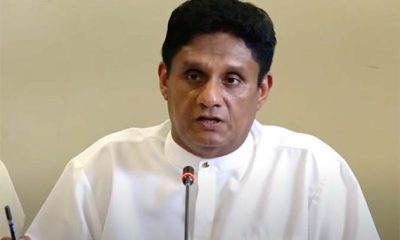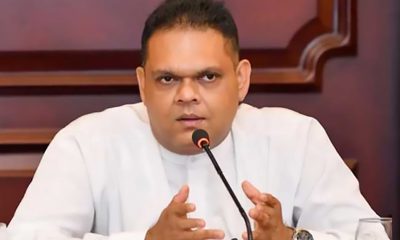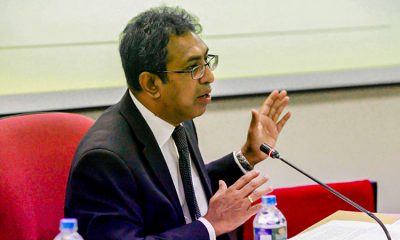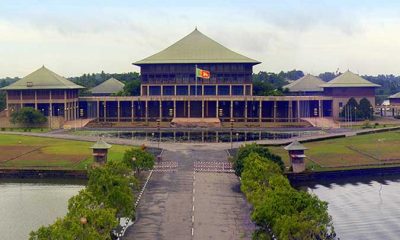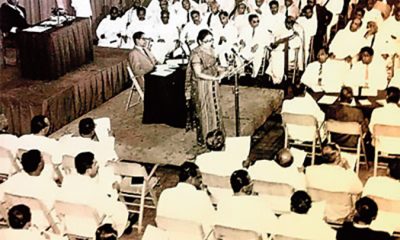Features
ABOLISHING THE EXECUTIVE PRESIDENCY -IS TIME RUNNING OUT?
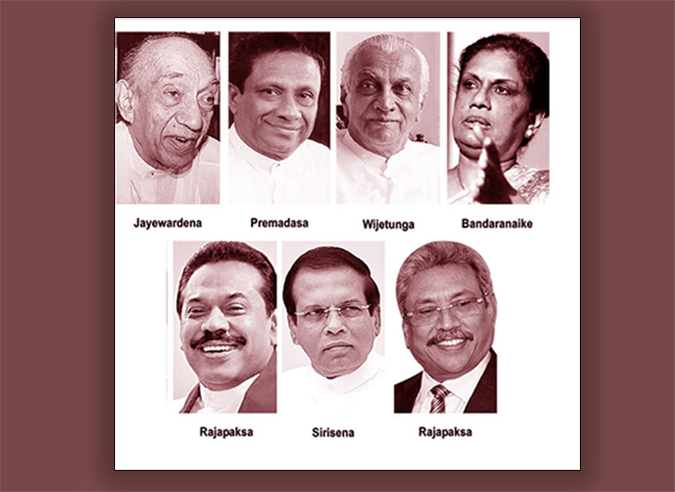
by Dr Nihal Jayawickrama
Earlier this week, the President’s Media Division issued a statement to the effect that the next presidential election will be held on schedule. What was the need for that statement? In terms of the Constitution, the President’s term of office ends not later than 18th November 2024. As far as I am aware, no member of Parliament has given any indication that he or she intends to introduce a Bill to amend the Constitution to extend the term of office of the President, as required by article 83 of the Constitution. Such a Bill, if passed with a two-third majority, will also need to be approved by the people at a referendum. In the absence of any such move, what was the need for the President’s Media Division to assert the obvious. Was it to stifle the movement for restoring the parliamentary executive that now appears to be gathering wide public support?
The hypocrisy of politicians
The leader of the SLFP, Maithripala Sirisena, has publicly declared that he supports the abolition of the executive powers of the President. In 2019, the JVP’s Anura Kumara Dissanayake presented a Bill to enable the then non-executive President to be elected by Parliament. In 2021, SJB leader Sajith Premadasa proposed a constitutional amendment to enable a non-executive President to be elected by Parliament. None of these political leaders now show any inclination to implement their previous commitments. Instead. they have publicly announced their intention to seek election to the office of Executive President. The chief whip of the Opposition offers a hilarious half-way deal: first hold the presidential election; then abolish the office!
Lawyer-parliamentarian Udaya Gammanpila sees the call for abolishing the executive presidency as “part of a conspiracy to postpone the next presidential election”. He argues that since the Supreme Court has previously held that a parliamentary vote to remove the executive powers of the President should be followed by a referendum, “if a person challenges the validity of the referendum, the executive presidency will not be abolished pending the Supreme Court determination, and the incumbent President can remain in power until the dissolution of parliament in August 2025. He explains that the hearing of a petition could take six months or even longer.
The obligation of the President
The responsibility to give effect to what is now an increasingly vocal public demand surely rests with the Head of Government, the incumbent President. In 2013, the Ranil Wickremesinghe-led UNP published the text of the principles upon which a new Constitution would be formulated after it forms a government. Among them was that the executive presidency would be abolished. In 2018, the government of Prime Minister Ranil Wickremesinghe prepared and published a draft Constitution which required the President to be elected by Parliament and to exercise his/her powers on advice. It is surely the responsibility, if not the obligation, of President Ranil Wickremesinghe to set in motion the legal processes necessary to achieve that objective before time begins to run out.
Bill for the 22nd Amendment to the Constitution
The first step should be to reform the electoral system. Since the list system of election to Parliament, based on proportional representation, is an integral element in the executive presidential system of governance, the Constitution will need to be amended to replace that system with the first past-the-post system of single and multi-member constituencies that prevailed under the 1946 and 1972 Constituencies. These will need to be supplemented with an element of proportional representation to ensure that minorities are adequately represented, and that there is equitable distribution of seats based on the totality of votes cast for each political party. Following the passage of this constitutional amendment by a two-third majority, the delimitation of electorates will need to commence immediately.
Bill for the 23rd Amendment to the Constitution
The next step should be another constitutional amendment for the following purposes:
· Establish the office of President of the Republic who shall be the Head of State, the Head of the Executive, and the Commander-in-Chief of the Armed Forces.
· Establish the offices of two Vice-Presidents who shall belong to two different ethnic groups, and neither of whom should belong to the ethnic group of the President.
· The President and Vice-Presidents shall be elected by Parliament. The term of office of the President and Vice-Presidents shall be four/six years.
· The President and Vice Presidents shall, except as otherwise provided by the Constitution, act on the advice of the Prime Minister, or of such other Minister to whom the Prime Minister may have given authority to advise the President or a Vice-President on any function assigned to that Minister.
· Whenever the President is prevented by illness or other cause from performing the duties of his office or is absent from Sri Lanka a Vice-President designated by the Prime Minister shall act in the office of President.
A Bill for the above purposes will require to be passed with a two-thirds majority. The Constitution does not require such a Bill to be approved at a referendum. However, the Supreme Court has been inconsistent on this question. In 2015, Chief Justice Sripavan and two other Judges held that the 19th Amendment (which required the President to act on the advice of the Prime Minister) was not required to be approved at a referendum, but different benches of Judges have since, in my view erroneously, held that approval at a referendum is required. Therefore, it is advisable for the government to state at the outset that it intends to submit the Bill to a referendum. This Bill, after being approved at a referendum, will come into force upon being certified by the President.
Dissolution of Parliament
The third and final step would be to dissolve Parliament, and fix dates for receiving nominations and for conducting the poll. The general election and the referendum could be held on the same day. If the President-in-office intends to be a candidate at the general election, he will need to resign his office upon issuing the proclamation dissolving Parliament. Since the incumbent Prime Minister may also be a candidate, the proposed Bill for the 23rd Amendment will need to make provision for the incumbent President to nominate a suitable person who is not a member of any political party to serve as interim president, and for such interim president to hold office until Parliament, after the general election, elects the President.
A New Constitution
During a brief conversation on a flight to Colombo, four months after he had been elected by Parliament to the vacant office of President, Ranil Wickremesinghe mentioned to me that one of his priorities was to solve the ethnic problem. I had no reason to disbelieve him. In fact, I accepted, and still do accept, that he had set that as a priority for himself during his tenure in the highest office in our country. Unfortunately, his belief that the full implementation of the provisions in the Constitution introduced by the 13th Amendment in 1987, during a bloody civil war, would achieve that objective is unfounded.
The strident response of the TNA spokesman Mr. Sumanthiran that nothing short of federalism will satisfy the Tamil population in the North and East, demonstrates the futility of seeking a solution based on that much maligned controversial constitutional amendment. Equally unfounded is his belief that a Truth and Reconciliation Commission (which is based on the Christian concept of Confession) will be appropriate for our country.
If President Wickremesinghe’s objective is national reconciliation and reintegration, Sri Lanka needs a new Constitution with a strong democratic foundation and based on the recognition that Sri Lanka is a multi-ethnic, multi-religious, and multi-linguistic country. The Constitution must also assert that Sri Lanka is a secular country, as Singapore does, in which everyone has the right to freedom of thought, conscience and religion, and does not need the intervention of the State to exercise that right.
It is desirable that a new Constitution should also contain the following provisions:
· The Democratic Socialist Republic of Sri Lanka will be restored to its original name “The Republic of Sri Lanka”.
· May 22nd will be recognized as “Republic Day”, while February 4th will continue to be recognized as “Independence Day”.
· Sinhala, Tamil, and English shall be the official languages, with English being the medium of instruction at the secondary and tertiary levels.
· The provisions of the International Covenant on Civil and Political Rights, and of the International Covenant on Economic, Social and Cultural Rights, both of which Sri Lanka has ratified, will be incorporated in the Constitution and be enforceable, including in respect of existing laws.
· A Constitutional Court will be established. Its jurisdiction will include the issuance of writs and the ex-post facto review of legislation. It may also serve as the court of final appeal in respect of important questions of law.
(f) A 30-member Senate will be established as the upper chamber of Parliament (perhaps consisting of representatives of professional organizations), with a 175/200-member House of Representatives as the lower chamber.
Conclusion
A new Constitution to replace the 21-times amended, author-unknown, and drafting- process-unknown, 1978 Constitution, is the real need of the hour. It will obviate the necessity to adopt the 22nd and 23rd Amendments referred to above. It will need a general election before it becomes fully operative, but it will not require a referendum to bring it into force. If the 1946 Constitution could have been drafted by a young assistant legal draftsman in three months, using a borrowed typewriter to work on; and if the 1972 Constitution could have been drafted in even less time, both at little or no expense to the State, there is no reason why a new Constitution for Sri Lanka cannot be drafted and adopted by Parliament before the Elections Commission begins the process of electing a new Executive President.
In this crucial election year, we need to ask ourselves why it is necessary to change the existing system. In answering that question, we must have regard not only to the manner in which this country has been governed during the past five decades, but also to the quality of governance in the world around us with which we must necessarily interact. We need to look ahead to the next 25 years and ask whether the constrictive framework of governance prescribed in the 1970s is appropriate or adequate to meet the challenges of the new millennium.
—————————————————–
Dr Nihal Jayawickrama, LL.B (Ceylon), Ph.D (London) is a former Permanent Secretary to the Ministry of Justice, who also served briefly as Attorney-General. He taught Comparative Constitutional Law at the University of Hong Kong, and at the University of Saskatchewan in Canada where he occupied the Ariel F. Sallows Chair of Human Rights. He is the author of The Judicial Application of Human Rights Law, (Cambridge University Press, 2002, 2nd ed.2017, 1200 pp.).
Features
Democracy faces tougher challenges as political Right beefs-up presence
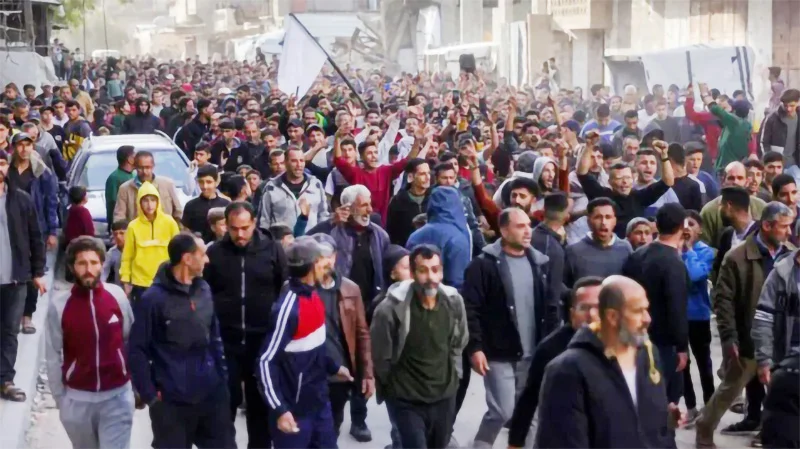
 It is becoming increasingly evident that the democracy-authoritarianism division would be a major polarity in international politics going forward. It shouldn’t come as a surprise if quite a few major states of both East and West gain increasing inspiration from the ‘world’s mightiest democracy’ under President Donald Trump from now on and flout the core principles of democratic governance with impunity.
It is becoming increasingly evident that the democracy-authoritarianism division would be a major polarity in international politics going forward. It shouldn’t come as a surprise if quite a few major states of both East and West gain increasing inspiration from the ‘world’s mightiest democracy’ under President Donald Trump from now on and flout the core principles of democratic governance with impunity.
It is the political Right that would gain most might in this evolving new scheme of things. Whether it be the US itself, France, Israel or Turkey, to name just a few countries in the news, it is plain to see that the Right is unleashing its power with hardly a thought for the harm being done to key democratic institutions and norms.
In fact, Donald Trump and his Republican hard liners led from the front, so to speak, in this process of unleashing the power of the Right in contemporary times. It remains a very vital piece of history that the Right in the US savaged democracy’s most valued institutions on January 6, 2021, when it ran amok with the tacit backing of Trump in the US Capitol.
What was being challenged by the mob most was the ‘will of the people’ which was manifest in the latter’s choice of Joe Biden as US President at the time. To date Trump does not accept that popular verdict and insists that the election in question was a flawed one. He does so in the face of enlightened pronouncements to the contrary.
The US Right’s protégé state, Israel, is well on course to doing grave harm to its democratic institutions, with the country’s judiciary being undermined most. To cite two recent examples to support this viewpoint, the Israeli parliament passed a law to empower the country’s election officials to appoint judges, while Prime Minister Netanyahu has installed the new head of the country’s prime security agency, disregarding in the process a Supreme Court decision to retain the former head.
Such decisions were made by the Netanyahu regime in the face of mounting protests by the people. While nothing new may be said if one takes the view that Israel’s democratic credentials have always left much to be desired, the downgrading of a democratic country’s judiciary is something to be sorely regretted by democratic opinion worldwide. After all, in most states, it is the judiciary that ends up serving the best interests of the people.
Meanwhile in France, the indications are that far Right leader Marine Le Pen would not be backing down in the face of a judicial verdict that pronounces her guilty of corruption that may prevent her from running for President in 2027. She is the most popular politician in France currently and it should not come as a surprise if she rallies further popular support for herself in street protests. Among other things, this will be proof of the growing popular appeal of the political Right. Considering that France has been a foremost democracy, this is not good news for democratic opinion.
However, some heart could be taken from current developments in the Gaza and Turkey where the people are challenging their respective dominant governing forces in street protests largely peacefully. In the Gaza anti-Hamas protests have broken out demanding of the group to step down from power, while in Turkey, President Erdogan’s decades-long iron-fist rule is being challenged by pro-democracy popular forces over the incarceration of his foremost political rival.
Right now, the Turkish state is in the process of quashing this revolt through a show of brute force. Essentially, in both situations the popular demand is for democracy and accountable governance and such aims are generally anathema in the ears of the political Right whose forte is repressive, dictatorial rule.
The onus is on the thriving democracies of the world to ensure that the Right anywhere is prevented from coming to power in the name of the core principles and values of democracy. Right now, it is the European Union that could fit into this role best and democratic opinion is obliged to rally behind the organization. Needless to say, peaceful and democratic methods should be deployed in this historic undertaking.
Although the UN is yet to play an effective role in the current international situation, stepped up efforts by it to speed up democratic development everywhere could yield some dividends. Empowerment of people is the goal to be basically achieved.
Interestingly, the Trump administration could be seen as being in league with the Putin regime in Russia at present. This is on account of the glaringly Right wing direction that the US is taking under Trump. In fact, the global balance of political forces has taken an ironic shift with the hitherto number one democracy collaborating with the Putin regime in the latter’s foreign policy pursuits that possess the potential of plunging Europe into another regional war.
President Trump promised to bring peace to the Ukraine within a day of returning to power but he currently is at risk of cutting a sorry figure on the world stage because Putin is far from collaborating with his plans regarding Ukraine. Putin is promising the US nothing and Ukraine is unlikely to step down from the position it has always held that its sovereignty, which has been harmed by the Putin regime, is not negotiable.
In fact, the China-Russia alliance could witness a firming-up in the days ahead. Speculation is intense that the US is contemplating a military strike on Iran, but it would face strong opposition from China and Russia in the event of such an adventurist course of action. This is on account of the possibility of China and Russia continuing to be firm in their position that Western designs in the Gulf region should be defeated. On the other hand, Iran could be expected to hit back strongly in a military confrontation with the US.
Considering that organizations such as the EU could be expected to be at cross-purposes with the US on the Ukraine and connected questions, the current world situation could not be seen as a replication of the conventional East-West polarity. The East, that is mainly China and Russia, is remaining united but not so the West. The latter has broadly fragmented into a democratic states versus authoritarian states bipolarity which could render the international situation increasingly unstable and volatile.
Features
Chikungunya Fever in Children
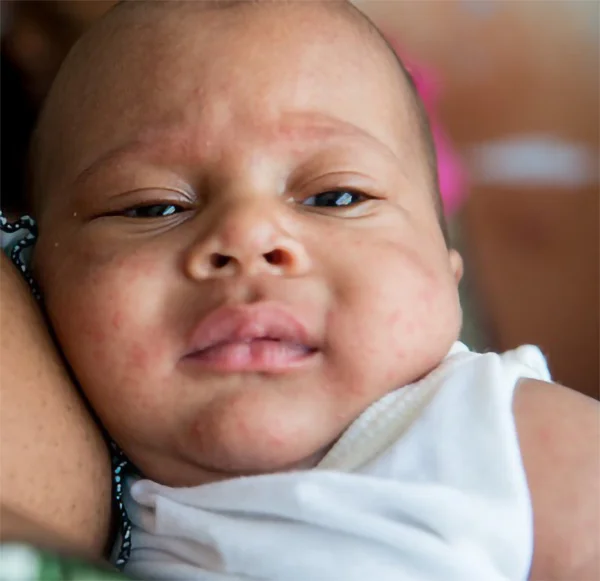
Chikungunya fever, a viral disease transmitted by mosquitoes, poses a significant health concern, particularly for children. It has been around in Sri Lanka sporadically, but there are reports of an increasing occurrence of it in more recent times. While often associated with debilitating joint pain in adults, its manifestations in children can present unique challenges. Understanding the nuances of this disease is crucial for effective management and prevention.
Chikungunya fever is caused by the chikungunya virus (CHIKV), an alphavirus transmitted to humans through the bites of infected Aedes aegypti and Aedes albopictus mosquitoes. These are the same mosquitoes that transmit dengue and Zika viruses, highlighting the overlapping risks in many areas of the world. It is entirely possible for chikungunya and dengue to co-circulate in the same area, leading to co-infections in individuals.
When a mosquito bites a person infected with CHIKV, it ingests the virus. After a period of growth and multiplication of the virus within the mosquito, the virus can be transmitted to another person through subsequent bites. Therefore, the mosquito acts as a vector or an intermediate transmitting agent that spreads the disease, but not as a reservoir of the disease. The spread of chikungunya is influenced by environmental factors that support mosquito breeding, such as stagnant water and warm climates. Urbanization and poor sanitation can exacerbate the problem by creating breeding grounds for these mosquitoes.
The clinical presentation of chikungunya in children can vary, ranging from mild to severe. While some infected children may even be asymptomatic and be normal for all intents and purposes, others can experience a range of symptoms, including a sudden onset of high fever, a common initial symptom. Pain in the joints of the body, while being a hallmark of chikungunya in adults, may be less pronounced in children. However, they can still experience significant discomfort and this must be kept in mind during processes of diagnosis and treatment. It is also important to remember that joint pains can present in various forms, as well as in different locations of the body. There is no characteristic pattern or sites of involvement of joints. Muscle aches and pains can accompany the fever and joint pain as well. A headache, too, could occur at any stage of the disease. Other symptoms may include nausea, vomiting, and fatigue as well.
A reddish elevated rash, referred to in medical jargon as a maculopapular rash, is frequently observed in children, sometimes more so than in adults. While chikungunya is known to cause such a rash, there is a specific characteristic related to nasal discoloration that is worth noting. It is called the “Chik sign” or “Brownie nose” and refers to an increased darkening of the skin, particularly on the nose. This discolouration just appears and is not associated with pain or itching. It can occur during or after the fever, and it can be a helpful clinical sign, especially in areas with limited diagnostic resources. While a generalised rash is a common symptom of chikungunya, a distinctive darkening of the skin on the nose is a particular characteristic that has been observed.
In some rare instances, particularly in infants and very young children, chikungunya can lead to neurological complications, such as involvement of the brain, known as encephalitis. This is associated with a change in the level of alertness, drowsiness, convulsions and weakness of limbs. Equally rarely, some studies indicate that children can experience bleeding tendencies and haemorrhagic manifestations more often than adults.
Diagnosis is typically made through evaluating the patient’s symptoms and medical history, as well as by special blood tests that can detect the presence of CHIKV antibodies (IgM and IgG) or the virus itself through PCR testing.
There is no specific antiviral treatment for chikungunya. Treatment focuses on relieving symptoms and allowing the body to recover on its own. Adequate rest is essential for recovery, and maintaining hydration is crucial, especially in children with fever. Paracetamol in the correct dosage can be used to reduce fever and pain. It is important to avoid aspirin, as it can increase the risk of a further complication known as Reye’s syndrome in children. In severe cases, hospitalisation and supportive care may be necessary.
While most children recover from chikungunya without any major issues, some may experience long-term sequelae. Joint pain can persist for months or even years in some individuals, impacting their quality of life. In rare cases, chikungunya can lead to chronic arthritis. Children that have suffered from neurological complications can have long term effects.
The ultimate outcome or prognosis for chikungunya in children is generally favourable. Most children recover fully within a few days or a couple of weeks. However, the duration and severity of symptoms can vary quite significantly.
Prevention is key to controlling the spread of chikungunya. Mosquito control is of paramount importance. These include eliminating stagnant water sources where mosquitoes breed, using mosquito repellents, wearing long-sleeved clothing and pants, using mosquito nets, especially for young children and installing protective screens on windows and doors. While a chikungunya vaccine is available, its current use is mainly for adults, especially those traveling to at risk areas. More research is being conducted for child vaccinations.
Chikungunya outbreaks can strain healthcare systems and have significant economic consequences. Public health initiatives aimed at mosquito control and disease surveillance are crucial for preventing and managing outbreaks.
Key considerations for children are that some of them, especially infants and young children, are more vulnerable to severe chikungunya complications and early diagnosis and supportive care are essential for minimising the risk of long-term sequelae. Preventing mosquito bites is the most effective way to protect children from chikungunya. By understanding the causation, clinical features, treatment, and prevention of chikungunya, parents, caregivers, and healthcare professionals can work together to protect children from this illness that could sometimes be quite debilitating.
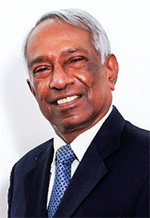 Dr B. J. C. Perera
Dr B. J. C. Perera
MBBS(Cey), DCH(Cey), DCH(Eng), MD(Paed), MRCP(UK), FRCP(Edin), FRCP(Lond), FRCPCH(UK), FSLCPaed, FCCP, Hony. FRCPCH(UK), Hony. FCGP(SL)
Specialist Consultant Paediatrician and Honorary Senior Fellow, Postgraduate Institute of Medicine, University of Colombo, Sri Lanka.
Joint Editor, Sri Lanka Journal of Child Health and Section Editor, Ceylon Medical Journal
Founder President, Sri Lanka College of Paediatricians – 1996-97)
Features
The Great and Little Traditions and Sri Lankan Historiography
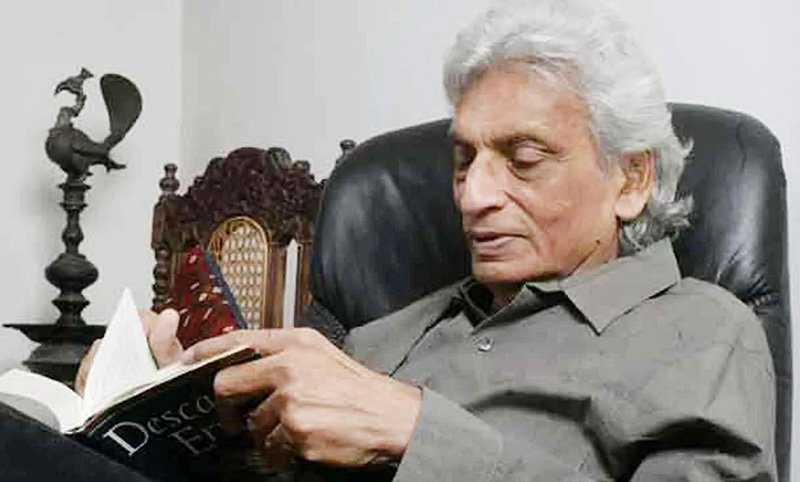
Power, Culture, and Historical Memory:
(Continued from yesterday)
Newton Gunasinghe, a pioneering Sri Lankan sociologist and Marxist scholar, made significant contributions to the study of culture and class in Sri Lanka by incorporating the concepts of great and little traditions within an innovative Marxist framework. His theoretical synthesis offered historians a fresh perspective for evaluating the diversity of past narratives.
At the same time, Michel Foucault’s philosophical intervention significantly influenced the study of historical knowledge. In particular, two of his key concepts have had a profound impact on the discipline of history:
1. The relationship between knowledge and power – Knowledge is not merely an objective truth but a manifestation of the power structures of its time.
2. The necessity of considering the ‘other’ in any conceptual construction – Every idea or framework takes shape in relation to its opposite, highlighting the duality inherent in all intellectual constructs.
These concepts challenged historians to rethink their approaches, prompting them to explore the dynamic interplay between knowledge, power, and culture. The existence of Little Tradition prompted historians to pay attention to ‘other’ histories.
The resurgence of ethnic identities and conflicts has brought renewed attention to the dichotomy of culture, steering the discourse in a new direction. The ethnic resurgence raises three key issues. First, the way non-dominant cultures interpret the past often differs from the narratives produced by dominant cultures, prompting the question: What is historical truth? Second, it underscores the importance of studying the histories of cultural identities through their own perspectives. Finally, and most importantly, it invites reflection on the relationship between ‘Little Traditions’ and the ‘Great Tradition’—how do these ‘other’ histories connect to broader historical narratives?
When the heuristic construct of the cultural dichotomy is applied to historical inquiry, its analytical scope expands far beyond the boundaries of social anthropology. In turn, it broadens the horizons of historical research, producing three main effects:
1. It introduces a new dimension to historical inquiry by bringing marginalised histories to the forefront. In doing so, it directs the attention of professional historians to areas that have traditionally remained outside their scope.
2. It encourages historians to seek new categories of historical sources and adopt more innovative approaches to classifying historical evidence.
3. It compels historians to examine the margins in order to gain a deeper understanding of the center.
The rise of a new theoretical school known as Subaltern Studies in the 1980s provided a significant impetus to the study of history from the perspective of marginalised and oppressed groups—those who have traditionally been excluded from dominant historical narratives and are not linked to power and authority. This movement sought to challenge the Eurocentric and elitist frameworks that had long shaped the study of history, particularly in the context of colonial and postcolonial societies. The writings of historians such as Ranajit Guha and Eric Stokes played a pioneering role in opening up this intellectual path. Guha, in particular, critiqued the way history had been written from the perspective of elites—whether colonial rulers or indigenous upper classes—arguing that such narratives ignored the agency and voices of subaltern groups, such as peasants, laborers, and tribal communities.
Building upon this foundation, several postcolonial scholars further developed the critical examination of power, knowledge, and representation. In her seminal essay Can the Subaltern Speak?, Gayatri Chakravorty Spivak questioned whether marginalized voices—especially those of subaltern women—could truly be represented within dominant intellectual and cultural frameworks, or whether they were inevitably silenced by hegemonic. Another major theorist in this field, Homi Bhabha, also focused on the relationship between knowledge and social power relations. His analysis of identity formation under colonialism revealed the complexities of power dynamics and how they persist in postcolonial societies.
Together, these scholars significantly reshaped historical and cultural studies by emphasising the voices and experiences of those previously ignored in dominant narratives. Their work continues to influence contemporary debates on history, identity, and the politics of knowledge production.
The Sri Lankan historiography from very beginning consists of two distinct yet interrelated traditions: the Great Tradition and the Little Traditions. These traditions reflect different perspectives, sources, and modes of historical transmission that have influenced the way Sri Lanka’s past has been recorded and understood. The Great Tradition refers to the formal, written historiography primarily associated with elite, religious, and state-sponsored chronicles. The origins of the Great Tradition of historiography directly linked to the introduction of Buddhism to the island by a mission sent by Emperor Asoka of the Maurya dynasty of India in the third century B.C. The most significant sources in this tradition include the Mahāvaṃsa, Dīpavaṃsa, Cūḷavaṃsa, and other Buddhist chronicles that were written in Pali and Sanskrit. These works, often compiled by Buddhist monks, emphasise the island’s connection to Buddhism, the role of kingship, and the concept of Sri Lanka as a sacred land linked to the Buddha’s teachings. The Great Tradition was influenced by royal patronage and aimed to legitimise rulers by presenting them as protectors of Buddhism and the Sinhala people.
In contrast, the Little Tradition represents oral histories, folk narratives, and local accounts that were passed down through generations in vernacular languages such as Sinhala and Tamil. These traditions include village folklore, ballads, temple stories, and regional histories that were not necessarily written down but played a crucial role in shaping collective memory. While the Great Tradition often portrays a centralised, Sinhala-Buddhist perspective, the Little Tradition captures the diverse experiences of various communities, including Tamils, Muslims.
What about the history of those who are either unrepresented or only marginally represented in the Great Tradition? They, too, have their own interpretations of the past, independent of dominant narratives. Migration from the four corners of the world did not cease after the 3rd century BC—so what about the cultural traditions that emerged from these movements? Can we reduce these collective memories solely to the Sokari Nadagams?
The Great Traditions often celebrate the history of the ruling or majority ethnic group. However, Little Traditions play a crucial role in preserving the historical memory and distinct identities of marginalised communities, such as the Vedda and Rodiya peoples. Beyond caste history, Little Traditions also reflect the provincial histories and historical memories of peripheral communities. Examples include the Wanni Rajawaliya and the Kurunegala Visthraya. The historical narratives presented in these sources do not always align with those of the Great Tradition.
The growth of caste histories is a key example of Little Historical Traditions. Jana Wansaya remains an important source in this context. After the 12th century, many non-Goigama castes in Sri Lanka preserved their own oral historical traditions, which were later documented in written form. These caste-based histories are significant because they provide a localised, community-centered perspective on historical developments. Unlike the dominant narratives found in the Great Tradition, they capture the social, economic, and cultural transformations experienced by different caste groups. For instance, the Karava, Salagama, and Durava castes have distinct historical narratives that have been passed down through generations.
Ananda S. Kulasuriya traced this historical tradition back to the formal establishment of Buddhism, noting that it continued even after the decline of the Polonnaruwa Kingdom. He identified these records as “minor chronicles” and classified them into three categories: histories of the Sangha and Sasana, religious writings of historical interest, and secular historical works. According to him, the first category includes the Pujavaliya, the Katikavatas, the Nikaya Sangrahaya, and the Sangha Sarana. The second category comprises the Thupavamsa, Bodhi Vamsa, Anagatha Vamsa, Dalada Sirita, and Dhatu Vamsa, along with the two Sinhalese versions of the Pali Hatthavanagalla Vihara Vamsa, namely the Ehu Attanagalu Vamsa and the Saddharma Ratnakaraya. The third category consists of works that focus more on secular events than religious developments, primarily the Rajavaliya. Additionally, this category includes the Raja Ratnakaraya and several minor works such as the Sulu Rajavaliya, Vanni Rajavaliya, Alakesvara Yuddhaya, Sri Lanka Kadaim Pota, Kurunegala Vistaraya, Buddharajavaliya, Bamba Uppattiya, Sulu Pujavaliya, Matale Kadaim Pota, Kula Nitiya, and Janavamsaya (Kulasuriya, 1978:5). Except for a few mentioned in the third category, all other works are products of the Great Historical tradition.
Over the last few decades, Gananath Obeyesekera has traversed the four corners of Sri Lanka, recovering works of the Little Historical Traditions and making them accessible for historical inquiry, offering a new lens through which to reread Sri Lankan history. Obeyesekera’s efforts to recover the Little Historical Traditions remind us that history is never monolithic; rather, it is a contested space where power, culture, and memory continuously shape our understanding of the past. By bringing the Little Historical Traditions into the fold of Sri Lankan historiography, Obeyesekera challenges us to move beyond dominant narratives and embrace a more pluralistic understanding of the past. The recovery of these traditions is not just an act of historical inquiry but a reminder that power shapes what we remember—and what we forget. Sri Lankan history, like all histories, is a dialogue between great and little traditions and it is to engage both of them. His latest work, The Doomed King: A Requiem for Sri Vikrama Rajasinghe, is a true testament to his re-reading of Sri Lankan history.
BY GAMINI KEERAWELLA
-

 Sports5 days ago
Sports5 days agoSri Lanka’s eternal search for the elusive all-rounder
-
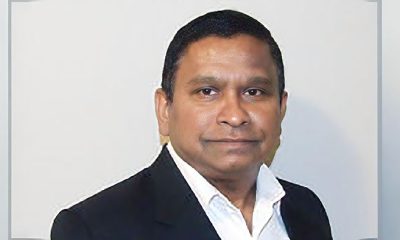
 News4 days ago
News4 days agoBid to include genocide allegation against Sri Lanka in Canada’s school curriculum thwarted
-
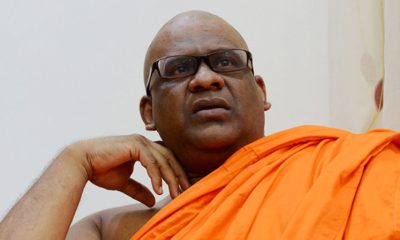
 News6 days ago
News6 days agoGnanasara Thera urged to reveal masterminds behind Easter Sunday terror attacks
-
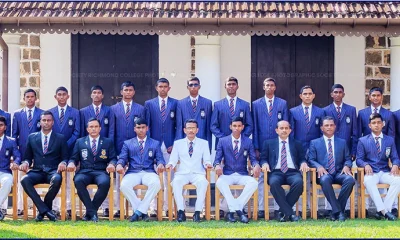
 Sports22 hours ago
Sports22 hours agoTo play or not to play is Richmond’s decision
-
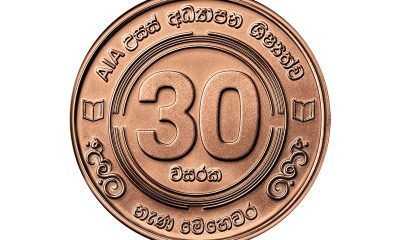
 Business7 days ago
Business7 days agoAIA Higher Education Scholarships Programme celebrating 30-year journey
-
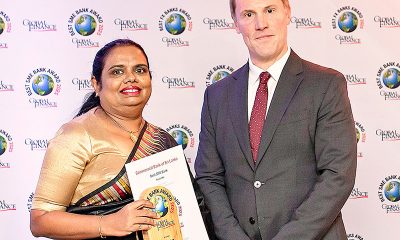
 News5 days ago
News5 days agoComBank crowned Global Finance Best SME Bank in Sri Lanka for 3rd successive year
-
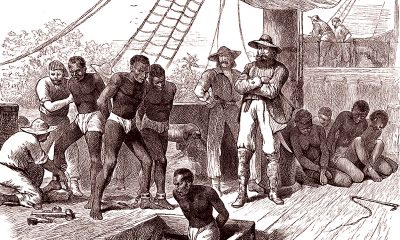
 Features5 days ago
Features5 days agoSanctions by The Unpunished
-
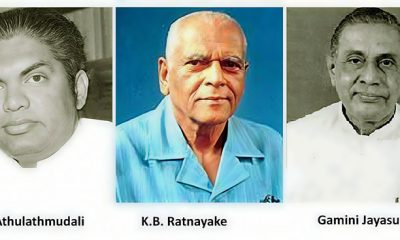
 Features5 days ago
Features5 days agoMore parliamentary giants I was privileged to know


